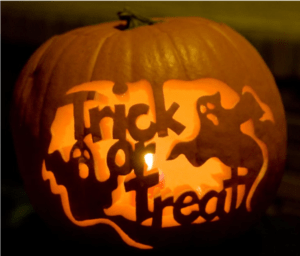Let’s get one thing out of the way: Facial recognition technology has its merits when it comes to events. It can avoid ticket fraud and make your event safer, among other things. It is, at the same time, highly disputed – and rightly so, since the benefits of this tech are paid for not just with money, but also with some loss of individual privacy.
Bearing this in mind, what we’re discussing in this article is: Are the gains to be had from facial recognition technology worth the price? And what problems does it solve that aren’t already addressed by existing technology?
Potential benefits of facial recognition tech
First, let’s look at why someone would consider using facial recognition tech in the first place. Your face is unique and pretty hard to change, and therefore makes for a great personal identifier. As an attendee, you can link your face to your ticket, to your credit card, and to your social profile, et voilá: You speed through check-in-gates, pay for your drinks, and publish an instagram post just by flashing your pretty face. Neat.
For event organisers, this tech has distinct advantages as well. Because cameras can – in theory – quickly and reliably identify and verify ticket holders by their face, facial recognition can detect unauthorised resold tickets, shorten or eliminate queues at the entrance gates as well as at the bar / food stall. Needless to say, less time waiting makes for happier attendees, and being able to serve them drinks and food quicker increases turnover – which is also driven by the fact that people tend to spend a lot more when they use cashless.
Organisers can also track and evaluate attendees’ purchase behaviour throughout the event, and – cameras provided – they can follow attendees around the venue to e.g. create heat maps to identify dangerous choke points for crowds, move staff from quieter areas to where they are needed most, and to send emergency staff to accidents. Not bad at all.
All in all, facial recognition is a technology with very clear benefits, but we also need to consider its potential downsides as well as existing tech to decide on its overall value.
What’s the worst that can happen?
So what are the risks? Companies processing your biometric data could store it longer than you want, sell it, or have this data intercepted, hacked, and leaked. And since your face is such a great identifier that rarely changes, having this data out there opens it up to serious abuse for e.g. identity theft, unwanted surveillance, or blackmail.
Sure, companies who have a stake in facial tech are at pains to stress that there are safe technological solutions to avoid all this. One executive in this field recently claimed that “I can’t tell you how, because that’s proprietary, but we have found a way of offering a fully personalised experience to the individual where we never access the data at all.” We should probably take these reassurances with a grain of salt, though. If we have learned two things from the digital age it is that a) there is no truly impenetrable security online, and 2) that you can’t completely trust some companies to keep your personal data safe, even if they sincerely try to do so.
Event security use case: Staff verification
There’s another use case for facial recognition tech that is less often discussed, though, and it might be more palatable for people concerned with mass surveillance: limiting the tech to the verification of event staff. “We used to joke about this”, says Mark Breen, Crowd and Event Safety consultant at Safe Events. “Just get on the site of a show two hours early, bring a bag and some sandwiches and wear black or yellow – no one says anything to you, you get in anywhere. From a safety perspective, the management of staff and contractor access is one of the biggest weaknesses of the general industry.
“So let’s say your risk assessment tells you that you need greater control over who’s coming on site”, Breen continues, “that’s where facial recognition could help you manage access for staff and contractors – and verifying staff identity for security purposes is a reasonable demand to make from suppliers.”
Other than a wristband, you can’t just pass on your face to someone else, and event managers could surveil backstage areas and easily detect faces of persons that are not authorised to be there. So arguably, there are some instances where facial recognition offers a real added benefit that only this tech can deliver, and where it doesn’t involve the privacy of thousands.
Is facial recognition the future?
That’s the million Euro question. The potential benefits of facial recognition for events are tangible and substantial, but since it involves scanning thousands of faces, it also infringes on individual privacy.
What if we didn’t have to accept this uncomfortable two-for-one deal, though? After all, there is an alternative solution that achieves most of the same benefits: RFID tech. Quite literally tied to you, RFID chips are similarly fast at checking you in, allow for cashless payments, and – if that’s what you opt into – they can be tracked on site with the help of sensors that are spread throughout the venue. In short, it’s a personal identifier, but that identification ends with the event you’re attending.
Bottom line
Facial recognition can deliver a lot of benefits for event creators and attendees alike, but it remains to be seen whether having your own face on record is one step too far for people concerned with their privacy – especially when there is existing tech like RFID, which delivers many of the same benefits, but does not require sensitive biometric data. While you can argue that facial recognition delivers a justifiable, true added value verifying professional event staff as they enter sites or venues, the wider success of facial recognition for all event attendees hinges on the public’s willingness to trade convenience for privacy.




